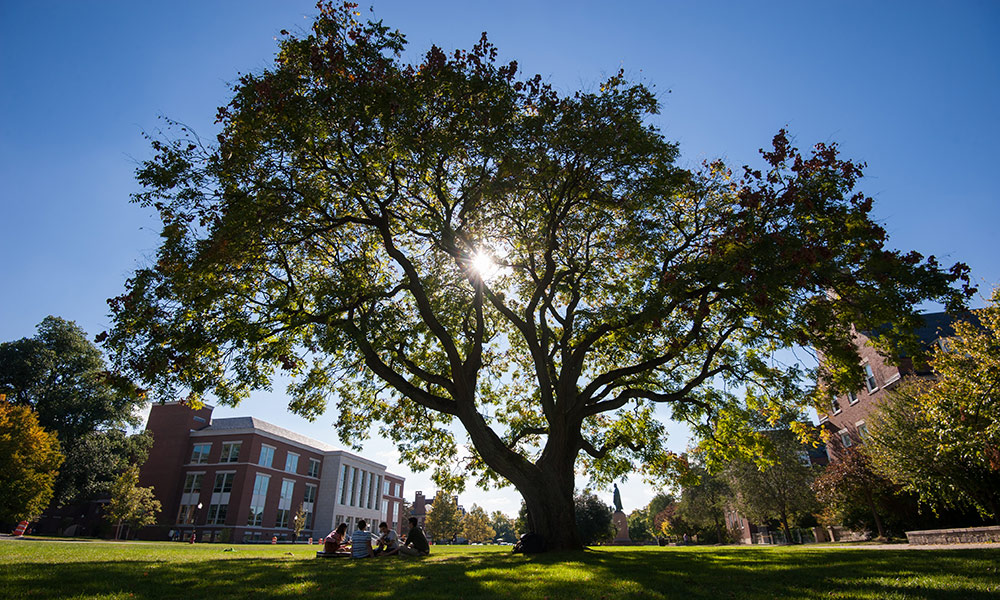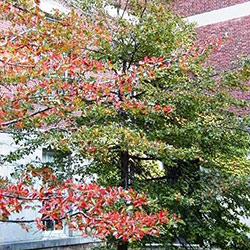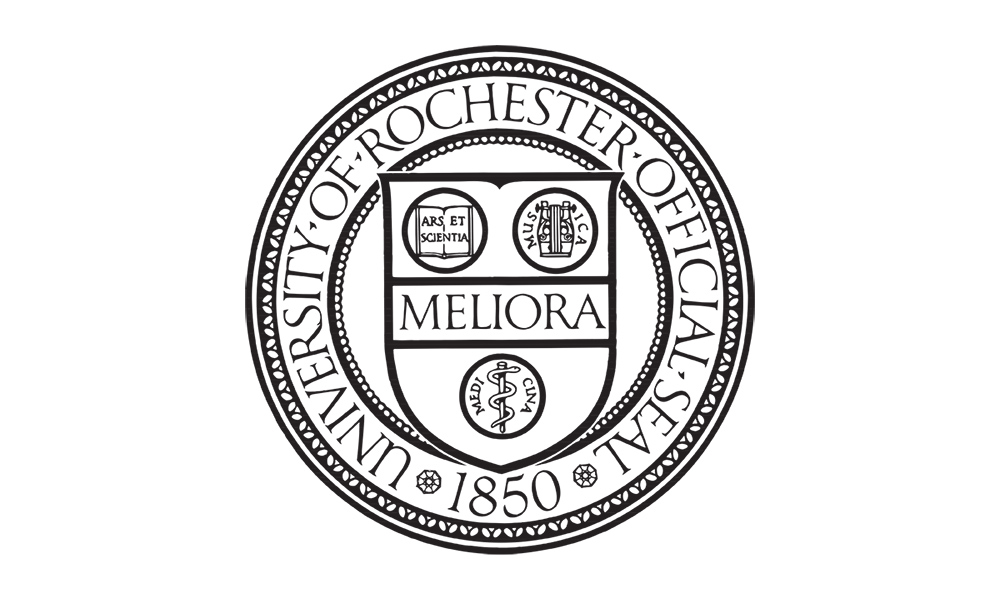In commemoration of Arbor Day (April 29), David Nelson, manager of University Horticulture & Grounds, highlights some of the notable trees in the University’s arboretum—trees you likely pass by every day.
For the past six years, the University has been recognized by the National Arbor Day Foundation as a Tree Campus USA, a designation that recognizes the careful attention that goes into preserving the institution’s notable variety of trees and shrubbery on the River Campus, Eastman School of Music, Medical Center, South, and Mt. Hope campuses. The University’s arboretum contains 1,400 trees of 116 different species.
Black Gum (Nyssa sylvatica)
Also commonly known as a Black Tupelo, the University’s prize specimen is located behind Rush Rhees Library before ascending the stairs to Meliora Plaza. The Black Gum tree is noted for its tremendous fall colors—yellow, orange, bright red, and purple, and often on one branch. At maturity, the Black Gum’s bark resembles the look of alligator hide. This species is native to eastern North America.
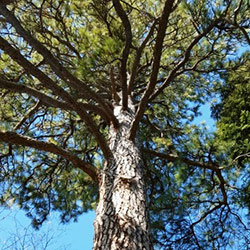 Ponderosa Pine (Pinus ponderosa)
Ponderosa Pine (Pinus ponderosa)
This majestic tree located on the University’s Mt. Hope Campus is a former “state champion,” meaning that in recent years New York State’s Department of Environmental Conservation recognized it as being one of the largest and best examples of this species in the state.
According to the National Arbor Day Foundation, “If a tree could personify the West, it would surely have to be the ponderosa pine.” The western region of the United States is the native area for this species of tree.
Due to its thick bark, the ponderosa pine becomes completely fire resistant when it is mature.
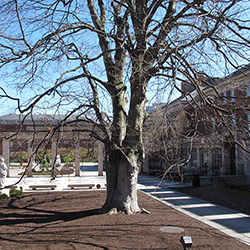 European Beech (Fagus sylvatica)
European Beech (Fagus sylvatica)
There are several species of Beeches throughout the University campuses, but one of the most cherished is the European Beech located behind Schlegel Hall.
The European Beech is native to Central Europe, brought to America by European colonists in the mid-1700s. Beeches are easily identifiable by their smooth, grey bark and large trunks that resemble large elephant legs.
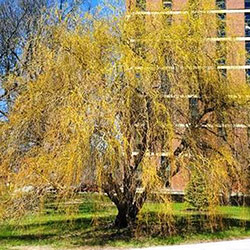 (Salix matsudana cv. ‘Tortuosa’)
(Salix matsudana cv. ‘Tortuosa’)
Located behind Anderson Tower, this unique tree is also known as a “Dragon’s Claw Willow” and earned its name because of the horizontal, twisted branches that it produces. Due to this trait, the species has great winter interest. The Corkscrew Willow is native to Northeastern China.
For more information on the University’s trees and their history, visit www.facilities.rochester.edu/support_ops/grounds/arboretum.html.


